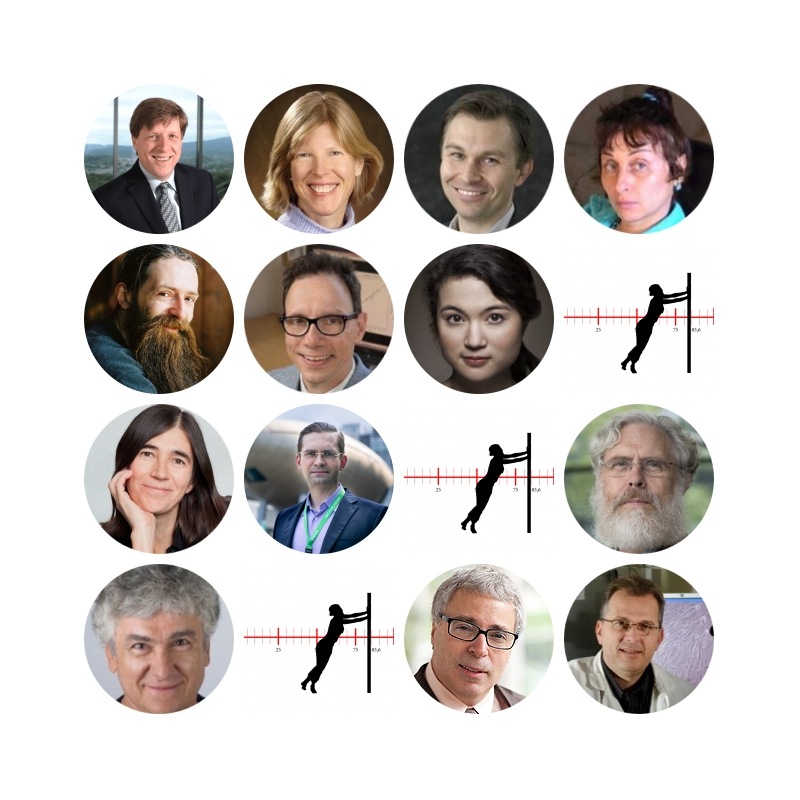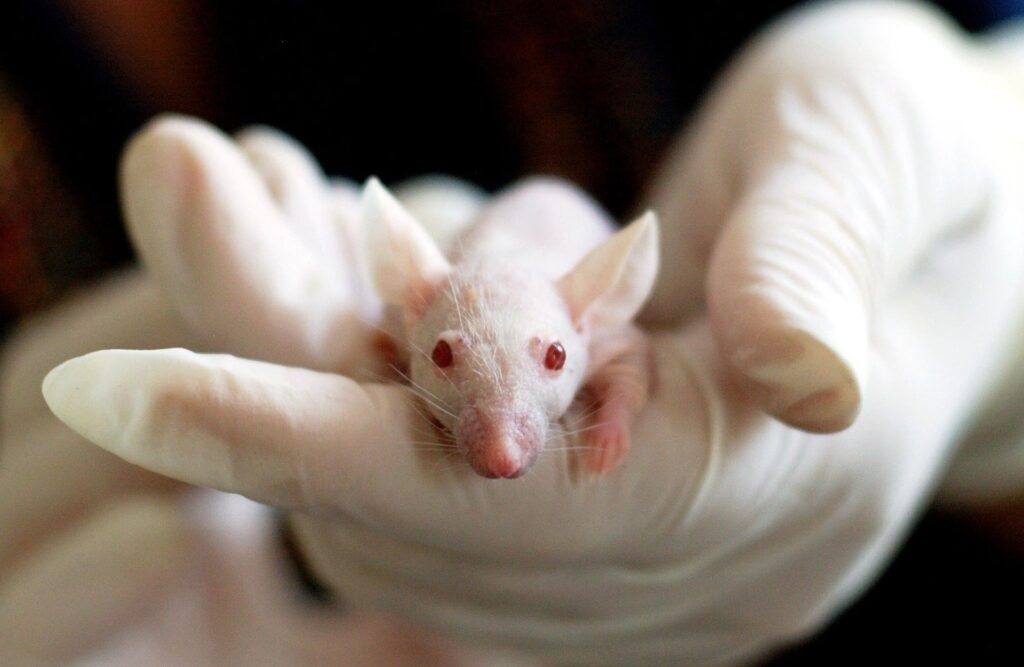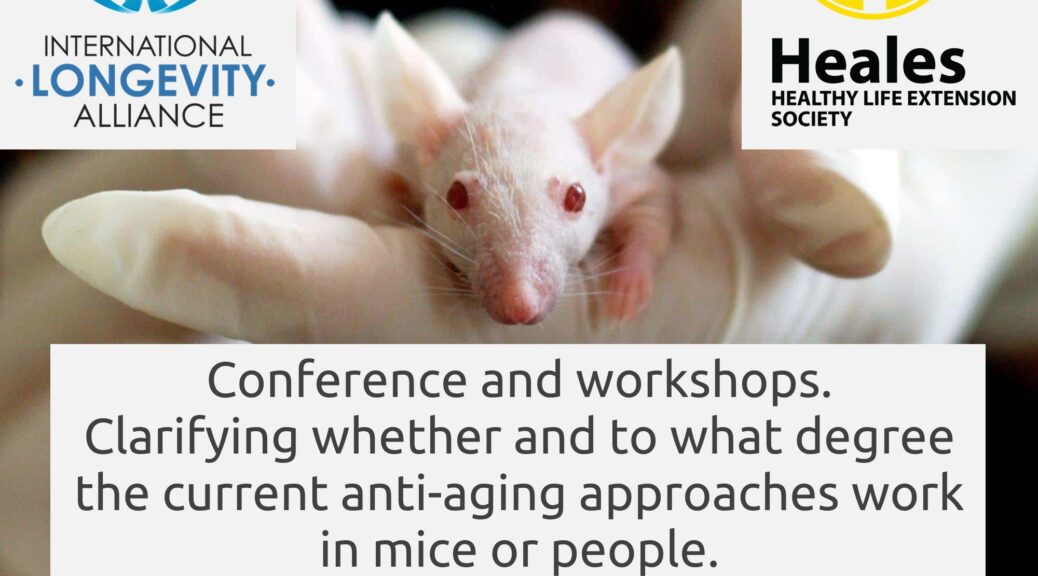I, personally, if there are technologies that can extend my life, and I have access to them, yes, I would choose to use them. But I also think that there are going to be individual questions because in the name of this freedom, we are also going to create inequalities between human beings. (…) There is going to be a radical moment (by) the conjunction between gene therapy and nanotechnology (…) which means that we are going to have treatments that are not only extremely effective in treating diseases related to aging, but also perhaps even in halting aging.
Corinne Narassiguin, French politician, number 2 of the Socialist Party, talking notably about possible ways of making these therapies accessible one day to all those who wish to have them.
Theme of the month: The most well-known longevitists

Obviously, the choice below is subjective. It is an overview of some of the women and men committed to making a much longer and healthier life possible. They have expressed themselves behind their test tubes, in their academic research, but also in front of cameras. The diversity of their approaches illustrates the difficulty and richness of the work in this field that concerns us all.
Aubrey De Grey
Aubrey de Grey is an English scientist, former computer scientist at the University of Cambridge and was initially self-taught in bio-gerontology. He now lives in California.
Inspired by Dr Denham Harman’s 1972 “Mitochondrial Theory of Aging”, he developed a project called SENS (Strategies for Engineered Negligible Senescence) to prevent age-related physical and mental decline.
He proposes to develop a means of regenerating cell tissue that will rejuvenate and extend human life expectancy without any time limit. He says he has identified seven causes of the aging process that must be countered in order to successfully complete this project.
Regarding his past career as a computer scientist (and then as a bioinformatician in genetics), Aubrey de Grey says :
There are really important differences between the creativity of a scientist and that of a technical engineer. It means that I am able to think in many very different ways, and end up with approaches to things that are different from the way a normal scientist thinks.
In 2007, he wrote a book, Ending Aging, with Michael Rae, which summarizes the scientific, political and social issues of the SENS project. He is the editor of the journal Rejuvenation Research. He is also a polymath, occasionally able to solve a mathematical problem that has remained unsolved for decades.
Irina Conboy
Irina Conboy is a Professor at the University of California, Berkeley, in the Department of Bioengineering. Her discovery of the rejuvenating effects of young blood through parabiosis in a seminal article published in Nature in 2005 paved the way for a thriving field in the biology of rejuvenation. Her husband, Michael Conboy, works with her.
A study published in May in the journal Aging shows that similar age-reversal effects can be achieved by simply diluting the blood plasma of old mice without using young blood.
In humans, the composition of blood plasma can be altered by a clinical procedure called therapeutic plasma exchange, or plasmapheresis, which is currently approved by the U.S. Food and Drug Administration for the treatment of various autoimmune diseases.
David Sinclair
David Sinclair is an Australian biologist who is Professor of Genetics and Co-Director of the Paul F. Glenn Center for the Biology of Aging at Harvard Medical School.
He is known for his research on aging, including being appointed an Officer of the Order of Australia (AO) for “distinguished service to medical research on the biology of aging and life extension, as a geneticist and academic, to biosafety initiatives and as an advocate for the study of science”.
Dr. Sinclair is co-founder of several biotechnology companies (Sirtris, Ovascience, Genocea, Cohbar, MetroBiotech, ArcBio, Liberty Biosecurity) and serves on the board of directors of several others. He is also co-founder and co-editor of the journal Aging.
In particular, he is working on substances called sirtuins, a class of enzymes that act as “circulating agents”, mobilizing a large number of proteins to repair and defend cells.
Miroslav Radman
Miroslav Radman likes paradoxes. In the same sentence, this rigorous scientist, passionate about art and singer in a choir, explains having created, in Split, in a former Croatian military barracks, the Mediterranean Institute of Life Sciences (MedILS), which operates with a “college” spirit but like a jazz band!
A former researcher at Harvard, but also in Zagreb and Brussels, he has been awarded numerous scientific prizes, including the French Inserm Grand Prix. He is Professor of Cell Biology at the University Paris Descartes, and a member of the National Academy of Sciences. He is also the author of the book Le Code de l’immortalité.
This famous biologist-geneticist seeks to revolutionize studies on aging. After working on DNA and genes, but also on the extremophilic and hyper-resistant bacterium Deinococcus radiodurans, he deciphers our bacteria and repair proteins, paving the way to new therapies for degenerative and cancerous diseases.
Steve Horvath
Steve Horvath is a German-American researcher, geneticist and biostatistician specializing in aging. He is a professor at the University of California at Los Angeles, known for developing the aging clock that bears his name, which is a highly accurate molecular biomarker of aging, and for developing weighted correlation network analysis.
According to him: Once we know how to accurately measure aging, we can study it and overcome it.
He works on all aspects of biomarker development, in particular genomic biomarkers of aging. He has developed a very accurate multi-tissue biomarker of aging known as the epigenetic clock.
Nir Barzilai
Dr. Nir Barzilai is founding director of the Institute for Aging Research at the Albert Einstein College of Medicine in New York.
I think prevention of aging is really good. … and I think life is going to be very different in the next decade because of our progress.
On his agenda for several years has been the development of a clinical trial, unique in the world, which aims to show that one molecule can delay the onset of all the diseases whose incidence increases with age. Its name: metformin, a well-known drug that reduces insulin resistance in the treatment of type 2 diabetes.
The TAME (Targeting Aging with METformin) study is funded by a non-profit association, AFAR (American Federation for Aging Research). “No one will make money if this drug proves to be effective because metformin is a generic that costs only a few cents per dose”, he says.
Cynthia Kenyon
Cynthia Kenyon is an American molecular biologist who studies the genetics of the aging process (gerontogenesis).
Dr Kenyon studied chemistry and biochemistry and received her PhD in 1981 from the Massachusetts Institute of Technology.
In Cambridge, she studied the Hox genes, active in the morphogenesis of drosophila (fruit flies). She then directed UCSF’s Hillblom Center for the Biology of Aging in San Francisco.
In particular, she demonstrated that by acting on a single gene (named daf-2) and destroying cells of the reproductive system, the lifespan of the nematode Caenorhabditis elegans could be multiplied by 6, from less than 3 weeks to 4 months.
Dr. Kenyon is currently employed by Google Calico as Vice President and Researcher on Aging.
Brian Kennedy
Brian Kennedy is internationally recognized for his research on the biology of aging and for his work in translating research discoveries into new ways to delay, detect and prevent human aging and related diseases. He currently works in Singapore. From 2010 to 2016, he was President and CEO of the renowned Buck Institute, where he remains a professor.
Our work on multiple animal models shows that the processes that lead to aging are conserved in the species. The study of these common pathways makes it possible to develop therapies that would slow down the aging process, thus preventing chronic diseases.
Jean-Marc Lemaître
The biologist Jean-Marc Lemaître was born on October 14, 1963. As a child, he enjoyed observing the ponds of his native French region, Picardy, to study the transformations of newts and tadpoles. A passion that led him to study developmental biology. As a research fellow at the Institute of Functional Genomics (Inserm/CNRS/University of Montpellier), he tries to demonstrate that aging is reversible.
In November 2011 he succeeded in doing so and published his work on cell rejuvenation in the American journal Genes and Development.
This is a considerable clinical success, comments Jean-Marc Lemaître. If we are able to delay cell aging, we may then be able to delay the development of certain pathologies.
Maria Blasco
Dr. Blasco is a molecular biologist whose main interests, since the time of her university studies, have been cancer and aging. After obtaining her PhD at the Center for Molecular Biology in Madrid, she moved to Cold Spring Harbor, New York, to work as a post-doctoral researcher in the laboratory of Dr. Carol Greider, the same Carol Greider who co-discovered telomerase with Elizabeth Blackburn in 1995.
At the time, the link between cancer, aging and telomerase was just a hypothesis that had yet to be proven, and Blasco set out to clone the mouse telomerase gene and create telomerase knockout mice to study the effects that lack of the enzyme would cause in animals.
George Church
As bearded, gifted and often as anti-conformist as Aubrey de Grey, George Church is an American chemist, geneticist and molecular biology engineer, best known for a book Regenesis, co-authored with Ed Regis, subtitled “How Synthetic Biology Will Reinvent Nature and Ourselves”, which presents a future where genetic engineering will have improved human and animal health, increased our intelligence, memory and lengthened our lives.
He took a list of 400 genes identified as potentially responsible for longevity in humans and reduced it to 45. Today, he is developing different techniques to target combinations of these genes. Our main goal is to reverse the aging process, explains Church, We know that by changing the rules, we can increase life expectancy by two and a half years in rodents and 200 years in bowhead whales.
Gene sequencing, he adds, is almost 3 million times less expensive than it was ten years ago. It allows us to use synthetic biology, and we are no longer restricted by the limitations of living things.
Church’s work is funded in part by the Wyss Institute. The scientist has also received funding from Google and Peter Thiel.
Laura Deming
Laura Deming is a biologist and founder of The Longevity Fund, the first venture capital firm to focus on companies working to extend the lives of healthy human beings and combat age-related diseases through biotechnology.
This is how she describes the birth of her commitment:
I remember one time when my grandmother came to visit us. I had never been with anyone over 60 before. (…) For my grandmother, just getting up from a chair was really painful. (…) I remember asking my parents what the disease was. They told me: she doesn’t have an illness, she is old. I asked them what disease it was to be old. They said, “Oh, no, no, you don’t understand, it’s a natural process. And as a child, you say to yourself: “This is stupid. Why is there a natural process that we should all get, a disease that makes us so damaged?”
Alex Zhavoronkov
Alex Zhavoronkov is the founder and CEO of Deep Longevity, Inc., a global company that develops a wide range of biomarkers of aging and longevity based on artificial intelligence. He is also the founder and CEO of Insilico Medicine, a leader in artificial intelligence technologies for drug discovery and biomarker development.
Since 2015, he has invented critical technologies in the field of “Generating Adversary Networks” (GANs) and Reinforced Learning (RL) for the generation of new molecular structures with desired properties, and the generation of synthetic biological and patient data. He has also pioneered applications of deep learning technologies for predicting human biological age using multiple types of data, transferring learning from aging to disease, target identification, and signaling pathway modeling.
A certainly incomplete list, and some favorites
To make a choice involves abandoning other options. We could have written about many other researchers as well. There are thousands of them who struggle day after day to repair what dramatist Jean Racine called the irreparable outrage of the years. The brilliant Greg Fahy and his thymus studies, Josh Mitteldorf and his Data-Beta Project studying the cumulative effects of longevity therapies, Michael Rose, who worked on the notion of antagonistic pleanthropy, William Andrews, the telomere specialist who also runs ultra-marathons, BioViva‘s controversial Liz Parrish who has experimented with gene therapies on herself, the specialists of (super)centenarians including Jean-Marie Robine and Leonid and Natalia Gavrilov.
They are many others less well known: the hundreds of collaborators of the above-mentioned scientists, Sven Bulterijs, co-president of Heales, who each month produces a review of longevity news, Ilia Stambler, the best historian of the sciences of longevity, author of the monumental Longevity A History of Life-Extensionism in the Twentieth Century, Kevin Perrott and his organization Open Cures, Alexandra Stolzing, who strives to rejuvenate mice with conviction and discretion, Guilhem Velve Casquillas, creator of the LongLongLife site and of multiple companies, the Russian Maria Konovalenko, photogenic scientist and activist working, like many others, in Silicon Valley, Laurent Simons, the gifted Belgian child who is 9 years old wanted to make his grandparents live forever…
This month’s good news: Eurosymposium on Healthy Ageing 2020
The 5th edition of the Eurosymposium took place online on October 1st, 2020 on the occasion of the International Day of Older Persons.
This event brought together leading scientists to address the topic of biomarkers of longevity as well as clinical testing.
Videos, separated for each speaker, are available on Youtube.
Following this conference, a declaration was adopted to facilitate biomarker research and clinical testing. Here is an excerpt from it:
There should be an obligation for ethical committees to decide within a reasonable time on the diagnostic tests on biomarkers of aging and clinical research of geroprotective therapies (not more than one month, unless providing a justification for the delay). Deciding faster must not mean being less careful, on the contrary (…)
By enhancing the evaluation of clinical aging biomarkers and testing new geroprotective therapies, it may be possible to radically reduce degenerative aging processes, and thus increase the health and economic benefits of the rapidly aging society. We must mitigate senescence processes as soon as possible to save as many lives as possible.
To learn more:




